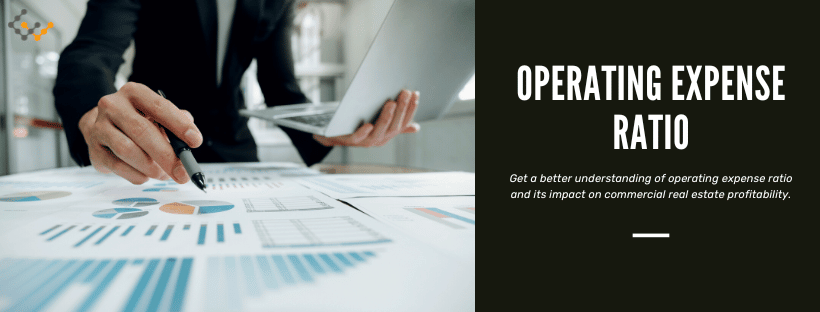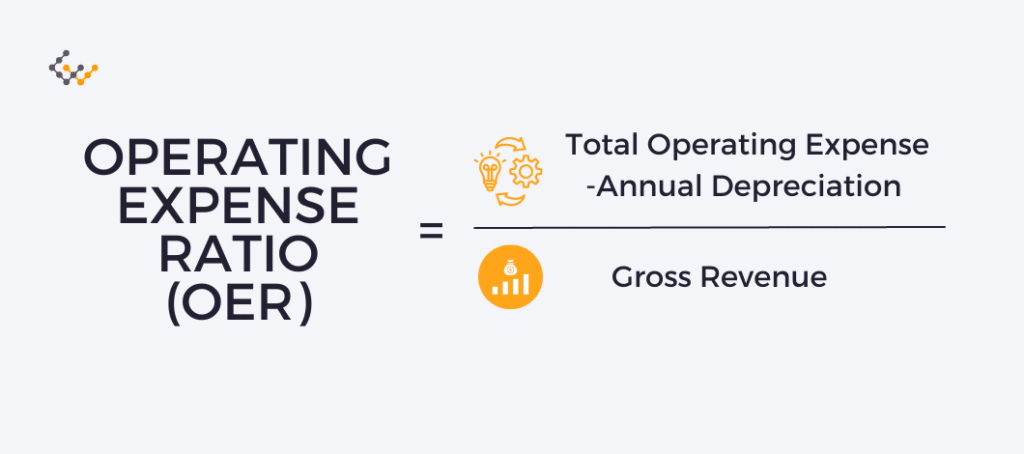Operating Expense Ratio Calculator: How to Calculate OER?

The operating expense ratio, sometimes called expense ratio or OER, is an important factor for all commercial real estate investors and property owners. It is a metric that compares the amount of income that a commercial property generates to the amount of money it costs to operate that property.
Why Does Operating Expense Ratio Matter?
The operating expense ratio helps show the cost to operate the real estate compared to the potential income that the property is capable of bringing in for the property owner. It can help investors to compare various properties to determine which is best suited for their goals and which could provide more profit potential. It can also be used to compare expenses of various property types.
For many investors, this metric is also valuable because it can provide an indication of concerns or challenges a property may have, such as significantly higher maintenance expenses compared to other properties. It could also indicate a poor potential for earning profit or that, in some way, the utilities for the property require a much higher than normal allotment.
Answer a few questions and get custom mortgage quotes. We'll match you with offers from our network of 650+ lenders.
How to Calculate Operating Expense Ratio
The formula for calculating the operating expense ratio is rather simplistic. Use the operating expense ratio formula to compare properties or learn more about the overall value of the property.
The total operating expenses minus any depreciation is divided by the gross revenue produced.
To calculate an operating expense ratio for any property, the investor must have data. That includes all of the operating expenses for the property. This should include any cost of ownership and maintenance of the property, including fees that are incurred during the normal operation of the property.
Then, the investor must consider the depreciation of the property. The depreciation expenses will vary significantly, and there are several methods to calculate them based on the accounting method used.
Every scenario is a bit different as well. For example, in a multifamily property, the investor must also consider vacancies that could impact their rental income. The same applies to a larger multi-tenant commercial property.
Example of How Operating Expense Ratio Is Calculated
Here is an example of how to calculate the operating expense ratio:
An investor is considering a multifamily property that has a rental income each month of $75,000. Each month, the investor will likely pay about $50,000 in maintenance and other fees associated with just maintaining and operating the business, along with mortgage payments, utility costs they foot the bill for, and taxes. The property is likely to depreciate by $60,000 in the next year.
To calculate this figure, then, the investor would:
To determine the operating expenses, multiply the monthly expenses by 12. In this case, that would be $600,000. Then, they subtract the amount of annual depreciation of the property, in this case, $90,000. That equals $510,000.
Multiply the monthly income by 12 to determine the annual rental income. That equals $900,000. Finally, divide $510,000 by $900,000, equaling 57%.
What is a Good Operating Expense Ratio for CRE?
Determining a good operating expense ratio is really dependent on many factors. Most often, it is best to use this figure to compare two properties. Differences in markets and various other factors will ultimately determine if the ratio is at a good level. This is also a personal decision for the investor to some degree.
Multifamily
A multifamily property is likely to have a lower expense ratio. Most often, this will fall between 35% and 45% in some markets. However, in other markets, that could be above 60%.
Office Space
Most often, the operating expense ratio for an office building should be between 35% and 55%, though this can differ based on the actual land ownership of the project.
Retail
In a retail setting, it is likely to have a normal operating expense ratio that is between 60% and 80% in some markets. Sometimes this can fall much lower, even to as low as 20% in some markets.
Industrial
In industrial, and commercial real estate, the operating expense ratio tends to be lower, around 15% to 25%. However, this depends on the buildout of the property.
Low Operating Expenses Ratio vs. High Operating Expense Ratio
Once investors know how to calculate the operating expense ratio, it is then possible to compare properties to determine which is the ideal investment. In most cases, the lower the operating expense ratio is, the lower the property’s operating expenses are. That is ideal – the lower expenses are, the more preferable the investment is likely to be.
If the operating expense ratio is higher, that means it will cost more to maintain and operate the property. In some cases, that could extend to situations where the expenses of operating the building are more than the income coming in, making this a non-profitable opportunity.
Factors That Can Impact Operating Expense Ratio
Various components make up the operating expense ratio. The higher these costs are, the more expensive it will be to maintain the property and the lower the profit potential is. Some of the factors that play a role include:
- General administrative costs, such as legal and accounting fees, office fees, wages, and salaries paid
- Sales and marketing costs
- Rent and utility expenses
- Repair and maintenance costs
- Non-capitalized research and development expenses
In some situations, this can also include the cost of goods such as:
- Direct material costs for the property
- Repair costs for equipment
- Rent of the plant or production facility
- Direct labor costs
The key to learning how to calculate operating expenses like these is to understand all costs that go into the running of the property. This differs from one project to the next, including how the property is leased and used.
How to Manage Operating Expense Ratio
The average operating expense ratio can be a confusing number because there are limitations to its accuracy and overall benefits. One key factor to keep in mind is that the operating ratio does not include debt. In companies that have a significant amount of debt, that often means that there are large amounts of interest to be paid. That is not typically a component of the operating expense ratio and can make one property look more beneficial than others.
Investors should also do their due diligence to ensure that all operating expenses are accurate and fully understood. There are many situations where that may not be the case, or there may be unrealized costs involved in the project. The more information that the investor has, the better they can determine if the underlying operating expenses are reasonable or if there is a hidden concern like significant upgrades needed.
Wrapping Things Up
The use of the operating expense ratio is important in the comparison of commercial real estate properties. It is one metric out of many that can help investors to better understand their specific needs and the type of outcome they may have from any investment they make. Accuracy is critical here, and due diligence is a big factor in ensuring the right decision is made for that investor’s specific needs. This is an ideal tool for comparison but needs further consideration to determine profitability.


